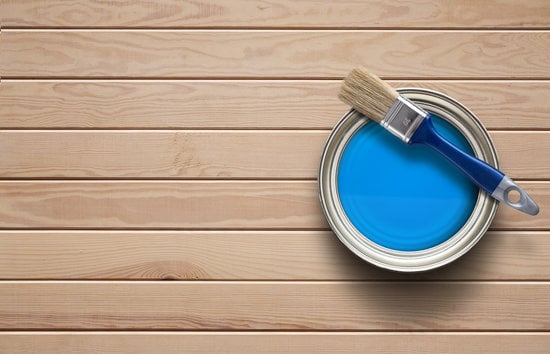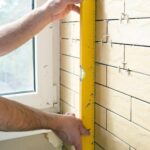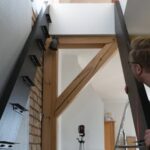Are you frustrated with low water pressure in your home? If so, you’re not alone. Many homeowners experience this issue, and it can be quite bothersome when trying to perform everyday tasks like taking a shower or washing dishes. In this article, we will explore various methods to improve water pressure in your home, from easy DIY tips to seeking professional help. But before we dive into the solutions, let’s first understand why high water pressure is important.
Having adequate water pressure is crucial for numerous reasons. Firstly, it ensures efficient and effective functioning of household appliances such as showers, faucets, and toilets. Insufficient water pressure can result in slow-filling toilets or weak flow from faucets, making these tasks more time-consuming than necessary. Secondly, high water pressure provides better cleaning power for dishes and laundry, allowing you to achieve cleaner results in less time.
Furthermore, good water pressure is also essential for maintaining a comfortable lifestyle. Taking a shower with low water pressure can be frustrating and uncomfortable, as the weak flow may not provide enough force to effectively rinse off soap or shampoo. Additionally, low water pressure can impact the performance of certain appliances like dishwashers or washing machines since they rely on sufficient pressure to properly clean your dishes or clothes.
In the following sections of this article, we will delve into common causes of low water pressure and teach you how to identify if your home has an issue. We will then explore various solutions ranging from simple do-it-yourself tricks to more complex plumbing upgrades that can significantly increase your home’s water pressure.
Whether you prefer tackling the problem yourself or seek professional assistance, there are options available to help improve your overall water pressure and enhance your daily life at home.
Why is my water pressure low?
One of the most frustrating issues to deal with in a home is low water pressure. It can make daily activities like showering, washing dishes, and doing laundry a time-consuming and inefficient task. Understanding the common causes and factors that affect water pressure can help homeowners identify the root cause of their low water pressure issues.
There are several reasons why your water pressure may be low. One common cause is a clogged or blocked pipe. Over time, mineral deposits, debris, and other materials can build up inside the pipes, restricting the flow of water and causing decreased water pressure. This is especially true in older homes with galvanized iron pipes that are prone to corrosion.
Another factor that affects water pressure is the size of your plumbing pipes. If your home has smaller diameter pipes, it can restrict the amount of water that flows through them, resulting in lower water pressure. Additionally, if there are leaks or damage to your plumbing system, it can lead to decreased water pressure as well.
Water supply issues also play a role in low water pressure. If there is high demand for water in your area, such as during peak usage hours or during drought conditions, it can put strain on the municipal water supply system and result in lower water pressure.
To check if your home has low water pressure, there are a few simple steps you can take. First, check all faucets and fixtures throughout your home to see if the low water pressure issue is isolated to one area or affects multiple areas. Next, inspect any visible pipes for leaks or signs of damage. Finally, test the water pressure using a gauge attached to an outdoor faucet or at the main shut-off valve.
If you determine that your home does have low water pressure, don’t worry. There are easy and cost-effective solutions you can try before considering more extensive upgrades or contacting a professional plumber.
Checking for water pressure issues
It is important to regularly check for water pressure issues in your home to ensure that you are enjoying optimal performance from your plumbing system. Low water pressure can be frustrating and can affect many household tasks such as showering, washing dishes, and watering plants. In this section, we will discuss some steps you can take to identify if your home has low water pressure.
Step 1: Check all faucets
The first step in identifying low water pressure is checking all the faucets in your home. Turn on the taps in your kitchen, bathroom, and any other areas with running water. If you notice a weak stream or inconsistent flow from multiple faucets, it is likely that you have low water pressure.
Step 2: Inspect showerheads and sprayers
Another way to determine if you have low water pressure is by inspecting your showerheads and sprayers. If the water flow from these fixtures seems weak or lacking force, it may indicate low water pressure. Additionally, mineral deposits or sediment buildup on showerheads and sprayers can also contribute to reduced water flow.
Step 3: Check for leaks
Leaks can also contribute to low water pressure. Check for any visible signs of leaks such as dripping faucets or pooling water around pipes and fixtures. Leaks not only waste precious water but can also result in decreased pressure throughout your plumbing system.
By following these steps, you can identify if your home has low water pressure. Once you have determined that there is an issue with your water pressure, it is time to explore solutions to improve it. In the next section, we will discuss some easy and cost-effective tips and tricks to enhance the water pressure in your home.
Easy and cost-effective solutions
One of the easiest and most cost-effective ways to improve water pressure in your home is by implementing some do-it-yourself (DIY) tips and tricks. These solutions can help address minor issues that may be causing low water pressure, saving you time and money in the process. Here are some DIY recommendations to consider:
- Clean or replace aerators: Over time, mineral deposits and sediments can accumulate in your faucets’ aerators, clogging the flow of water and reducing pressure. To address this, you can remove the aerators from your faucets and clean them thoroughly using vinegar or a descaling solution. If the buildup is too severe, it might be necessary to replace the aerators entirely.
- Flush your pipes: Mineral deposits can also accumulate inside your plumbing system, especially in older homes with galvanized pipes. Flushing out these deposits can potentially improve water pressure by clearing any blockages. To flush your pipes, turn off the main water supply, open all faucets until they run dry, then close them and turn on the supply again.
- Adjust the pressure regulator: Many homes have a pressure regulator installed near their main water valve to maintain stable water pressure throughout the house. If yours is not properly adjusted, it could be limiting water flow unnecessarily. Find the regulator (usually located where the main line enters your home) and use a wrench to increase or decrease its setting until you find an optimal balance.
Implementing these DIY solutions can often provide noticeable improvements in water pressure without requiring professional assistance or significant expenses. However, if these actions do not resolve the issue or if you discover more significant underlying problems such as leaks or damaged pipes during your DIY efforts, it may be necessary to consult a professional plumber for further guidance.
Remember that before attempting any DIY solutions, it’s essential to diagnose the cause of low water pressure accurately through careful inspection and testing to avoid wasting time on unnecessary actions. By taking the time to explore these quick and affordable fixes, you may be able to restore your home’s water pressure and enjoy a more satisfactory showering and overall water usage experience.
Upgrading your plumbing system
One of the more effective ways to improve water pressure in your home is by upgrading your plumbing system. This can involve installing a pressure regulator or upgrading your pipes. By taking these steps, you can enhance water pressure and ensure a steady flow throughout your home.
Installing a pressure regulator is a common solution for homeowners experiencing low water pressure. A pressure regulator works by adjusting the water pressure as it enters your home, ensuring that it remains consistent and at an optimal level. This can help to resolve any issues caused by high or low water pressure, and provide a more enjoyable and efficient experience when using faucets, showers, and other water fixtures.
Another option to consider is upgrading your pipes. Older or corroded pipes can restrict the flow of water, resulting in low water pressure. By replacing these pipes with newer materials such as copper or PEX, you can improve water flow and increase the overall water pressure in your home. It is important to consult with a professional plumber to determine the best course of action for upgrading your plumbing system.
In addition to installing a pressure regulator or upgrading pipes, there are other steps you can take to enhance water pressure in your home. For example, removing any sediment or debris from your plumbing system, checking for leaks or clogs in your pipes, and ensuring that all valves are fully open can all contribute to better water pressure. Regular maintenance of your plumbing system will also help to prevent future issues and maintain optimal water pressure levels.
| Upgrade Option | Description |
|---|---|
| Installing a Pressure Regulator | This option involves installing a device that regulates the incoming water pressure in your home. |
| Upgrading Pipes | Replacing older or corroded pipes with newer materials like copper or PEX can improve water flow and increase water pressure. |
Contacting a professional plumber
When it comes to resolving water pressure issues in your home, sometimes it may be necessary to seek the help of a professional plumber. While there are many easy and cost-effective solutions that you can try on your own, there are certain situations where the expertise of a plumber is needed. Here are some instances when you should consider contacting a professional plumber to resolve water pressure issues.
- Persistent low water pressure: If you have tried all the DIY tips and tricks and your water pressure still remains consistently low, it may be time to call in a professional. A plumber will have the knowledge and experience to accurately diagnose the cause of the low water pressure and provide appropriate solutions.
- Sudden changes in water pressure: If you notice a sudden decrease or increase in water pressure throughout your home, it could indicate a more serious underlying issue. This could be caused by a blockage in the pipes, a malfunctioning pressure regulator, or even a damaged main water line. In such cases, it is best to consult with a professional plumber who can quickly identify and address the problem.
- Water pressure affecting multiple fixtures: If you are experiencing low water pressure throughout your home and not just in one specific fixture, it is likely an indication of a larger problem that requires professional attention. A plumber will be able to assess your plumbing system as a whole and determine if there are any problems with your pipes or other components that need repair or replacement.
When contacting a professional plumber, make sure to provide them with as much information as possible about your water pressure issues. This includes any DIY attempts you have made, any changes you have noticed, and any specific fixtures that are affected. This will help them diagnose the problem more accurately and efficiently.
Remember, seeking professional help for resolving water pressure issues can save you time, money, and potential headaches down the line. By addressing any underlying problems correctly the first time around, you can ensure optimal water pressure in your home for years to come.
Maintaining optimal water pressure
Regular maintenance is crucial to ensure sustained high water pressure in your home. By following a few simple tips, you can prevent low water pressure issues and maintain optimal water flow throughout your plumbing system.
Monitor Your Water Pressure
One of the first steps in maintaining optimal water pressure is to regularly monitor it. Invest in a water pressure gauge and attach it to an outdoor faucet or a laundry room faucet. Check the gauge periodically to ensure that the water pressure remains within the recommended range, which typically falls between 40-60 psi (pounds per square inch). If you notice any significant fluctuations in pressure, it may indicate an underlying issue that needs attention.
Clean Out Faucet Aerators and Showerheads
Over time, sediment and mineral deposits can build up in your faucet aerators and showerheads, leading to decreased water flow and lower water pressure. To prevent this, it’s important to clean out these fixtures regularly. Simply unscrew the aerator or showerhead from the faucet or shower arm, soak them in a mixture of vinegar and warm water for a few hours, then scrub away any residue with a brush. Rinse them thoroughly before reattaching them.
Flush Your Water Heater
Mineral deposits can also accumulate in your water heater over time, affecting its performance and causing reduced hot water pressure. To counteract this, it’s recommended to flush your water heater annually. Start by turning off the power supply or gas to the heater and closing off its cold-water inlet valve.
Attach a hose to the drain valve at the bottom of the unit and run the other end of the hose outside or into a drain. Open the drain valve and let several gallons of water drain out until it runs clear. This process will remove any sediment buildup inside your water heater, improving both its efficiency and your overall hot water pressure.
By incorporating these maintenance tips into your routine, you can significantly reduce the likelihood of experiencing low water pressure in your home. Regularly monitoring your water pressure, cleaning out faucet aerators and showerheads, and flushing your water heater will help ensure sustained high water pressure and a reliable plumbing system.
Additional considerations
Water flow restrictors and water softeners are additional considerations that can affect water pressure in your home. While these components may serve specific purposes, they can sometimes lead to a decrease in water pressure if not properly installed or maintained.
Water flow restrictors are devices that reduce the amount of water flowing through a fixture, such as faucets and showerheads. They are designed to conserve water and promote efficiency, but they can also limit the flow and therefore reduce water pressure. If you’ve noticed a significant decrease in water pressure after installing new fixtures or appliances, it is worth checking if they have flow restrictors installed.
To address this issue, you can either remove the flow restrictors entirely or clean them if they have become clogged with debris or mineral buildup. Most flow restrictors can be easily unscrewed by hand or with the help of pliers. However, it’s important to note that removing flow restrictors may increase your water usage and ultimately impact your monthly bill.
Similarly, water softeners are devices used to remove minerals like calcium and magnesium from hard water. While these systems provide many benefits such as reducing limescale buildup on plumbing fixtures and improving soap lathering, they can also contribute to reduced water pressure if not properly maintained.
Over time, the resin bed inside the water softener can become fouled with minerals, causing a decrease in water pressure. Regular maintenance such as cleaning or replacing the resin bed is necessary to ensure optimal performance. Additionally, adjusting regeneration settings according to your household‘s needs is crucial to prevent excessive backwashing that could result in decreased pressure.
By addressing these additional considerations related to water pressure – such as flow restrictors and water softeners – you can further improve the overall performance of your plumbing system and maintain high water pressure throughout your home. It is important to understand their functions and ensure proper installation and maintenance for optimal results.
Conclusion
In conclusion, water pressure plays a crucial role in our daily lives, from showering to washing dishes. It is important to understand the causes and factors that can affect water pressure, as well as how to identify if your home has low water pressure. Fortunately, there are several easy and cost-effective DIY solutions available that can help improve water pressure in your home.
One option is to upgrade your plumbing system by installing a pressure regulator or upgrading your pipes. These upgrades can significantly enhance water pressure and provide a long-term solution. However, it is important to note that these upgrades may require professional assistance, so contacting a plumber is recommended in such cases.
Once you have addressed any immediate issues with water pressure, it is essential to maintain optimal levels over time. Regular maintenance tips, such as checking for potential issues related to water flow restrictors or water softeners, can help ensure sustained high water pressure in your home.
Frequently Asked Questions
Can you increase water pressure in your house?
Yes, it is possible to increase water pressure in your house, but the exact method depends on the specific factors causing the low pressure. One common solution is to adjust or replace the main pressure regulator valve that controls the water flow entering your home. Sometimes this valve may become damaged or worn out, leading to decreased water pressure.
Another option is to install a booster pump system, which can help increase water pressure throughout the entire plumbing system. Additionally, ensuring there are no blockages or leaks in the pipes can also improve water pressure.
How do I fix low water pressure in my house?
To fix low water pressure in your house, it’s important to identify the cause of the issue first. Start by checking if the low pressure is affecting only one faucet or fixture or if it’s throughout your entire home. If it’s isolated to a particular fixture, such as a showerhead or faucet aerator, it could be due to mineral build-up blocking the flow of water.
In such cases, soaking and cleaning these attachments with vinegar can help restore proper water flow. However, if low water pressure is widespread in your house, you may need to check for leaks in pipes, ensure valves are fully open, and inspect your main shut-off valve for any issues.
How do I increase water pressure in my home plumbing?
Increasing water pressure in home plumbing often requires professional assessment and appropriate adjustments based on the specific plumbing setup. One way to potentially enhance water pressure is by adjusting your well pump settings if you have a private well system. Consulting with a licensed plumber who may recommend upgrading your pump or installing an additional booster pump can help optimize water flow throughout your home’s plumbing network.
Additionally, ensuring all pipes are properly sized and not obstructed by blockages or corrosion will contribute to improved water pressure. Regular maintenance and inspection of plumbing components will also prevent any potential issues that could reduce water pressure over time.

I’m thrilled to have you here as a part of the Remodeling Top community. This is where my journey as an architect and remodeling enthusiast intersects with your passion for transforming houses into dream homes.





